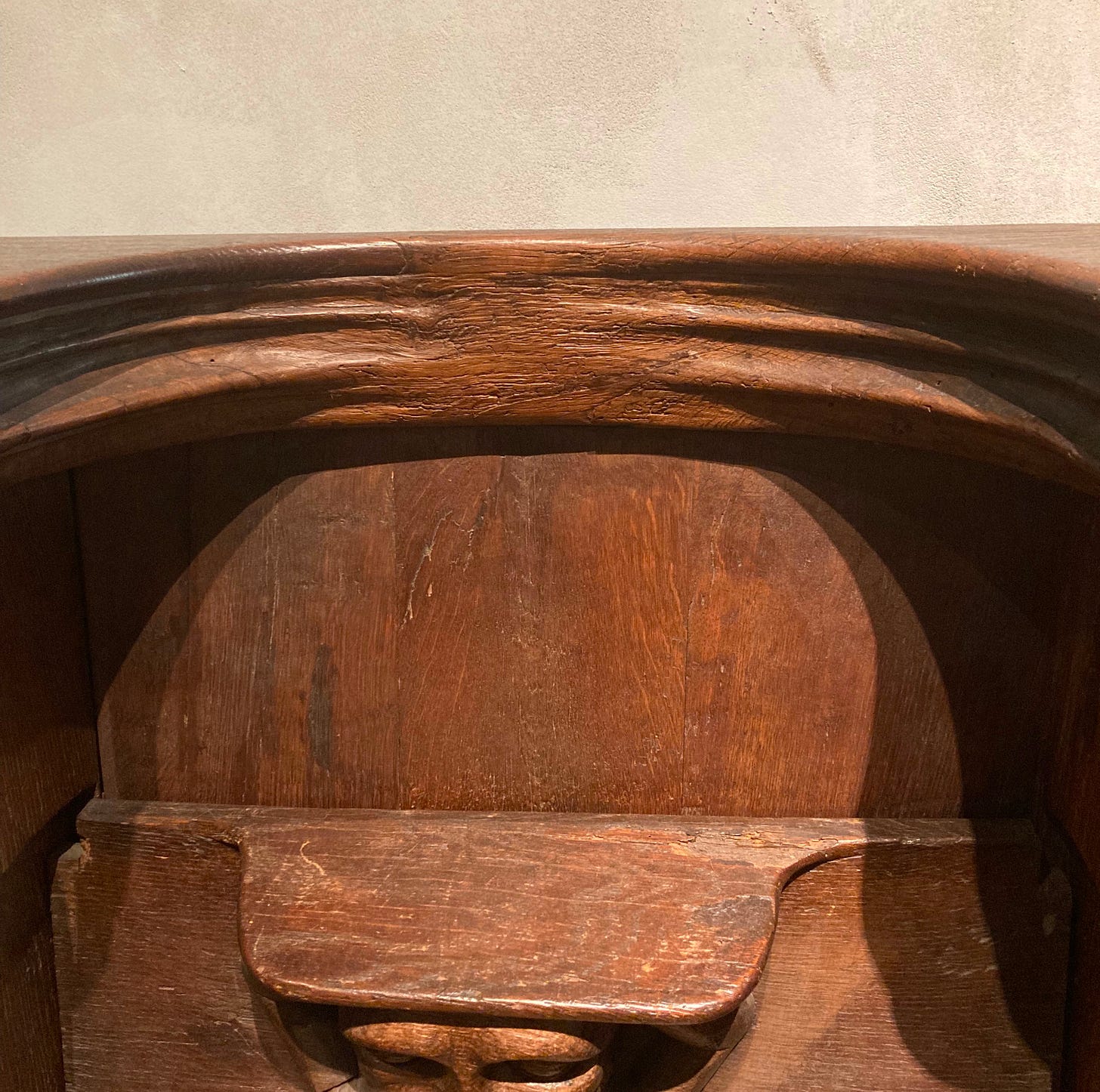Misericord
A meditation on what remains long after the institution is gone.
In the Late Gothic Hall of the Met Cloisters museum of medieval art, there is a piece of oak furniture from a 15th century French monastery: a carved pair of choir stalls. Different from a standard church pew, choir stalls were linked individual coves with hinged seats. One for each nun or monk.
The first thing I noticed about these choir stalls was the very center of the curved backrest of each. There, the deeply carved trim had been worn almost smooth. The people who had prayed in these seats had used them so regularly and for so long — wearing rough robes, in damp cold and sticky heat, all hours of the day, every day of the year — that the wood had worn down, bit by bit, until all the feature of decoration was nearly gone.
This was something I’ve never seen on a regular church pew.
From what I understand, when someone took final monastic vows, she would be assigned a particular stall. This seat would become hers for the rest of her life. She would spend hours a day there in prayer with the community, chanting psalms, singing creeds, listening to scripture. She would find herself in this spot from before first light until sundown, seven or eight times a day, sometimes for two hours at a stretch, and other times for a brief 20 minutes, like a spiritual coffee break in the middle of work.
What fretting and daydreams must have been brought to those seats? The wood worn away by a steady stream of intention, petition, devotion, distraction.
In France, during the period when these choir stalls would have been used daily, monasteries were more than just set-apart cloisters for prayer. In a world without social safety nets, they were safe havens for travelers on risky roads. They were hospitals and pharmacies, with medicinal gardens and water wells. They were hospices for the dying. They were centers of learning, the keepers of literacy and books.
They were also full of imperfect human beings. All monasteries seem to start with holy purpose; many drift off-course. People had to live together in close quarters, getting on each others’ nerves, disagreeing about how things should be run in dangerous times. Greed or gluttony or abuse of power would beckon like sweet relief.
The underside of each choir stall seat contains a little ledge. When the hinged seat is flipped up, the ledge becomes a kind of stool you could rest on while standing for long periods. These little ledges were called misericords, from the Latin word meaning mercy.
Mercy. The little seats were a mercy when standing long hours for vigils. The prayers repeated, day after day, were so many requests for mercy. The lives given to one particular place, one particular time, one particular long form of attention, they were a collective offering of mercy.
Little more is said about these choir stalls at The Cloisters. Who knows whether they came from an abbey known for simplicity or one known for embarrassing excess. Was the church where they stood destroyed by some natural disaster or the fury of the French Revolution?
We don’t know what kind of women or men prayed from these places, the good or mischief they enacted toward each other. All we can really tell from these choir stalls is that for a long time, a few people showed up there to pray, to give their collective attention to something far beyond than themselves. The worn backs of these seats may be the only enduring mark left by their lives.
It is a mark that moves me: Here someone tried to pray without ceasing.




What a lovely offering. The idea that the worn away patch on the furniture may be all that remains of someone made me gasp!
The comfort of your voice telling your stories is a tender mercy. Thank you!
Jean Mavromatis